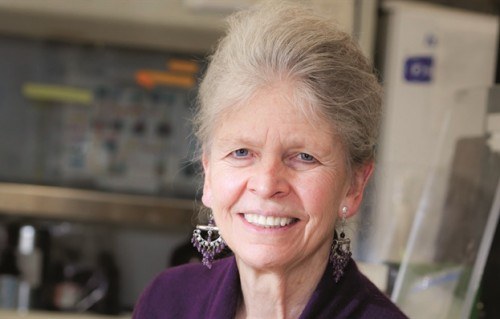Lecture screening in Great Zoological Hall: Viral and Cellular Noncoding RNAs: Insight Into Evolution
 Joan A. Steitz, Sterling Professor of Molecular Biophysics and Biochemistry, photo: Yale University
Joan A. Steitz, Sterling Professor of Molecular Biophysics and Biochemistry, photo: Yale University
Steitz was born in Minneapolis, Minnesota. She grew up in Minnesota in the 1950s and 60s at a time when there were virtually no female role models in molecular biology. She attended the then all-girls Northrop College for high school.
In 1963, Steitz received her Bachelor of Science degree in chemistry from Antioch College, Ohio, where she first became interested in molecular biology at Alex Rich's Massachusetts Institute of Technology laboratory as an Antioch "coop" intern.
After completing her undergraduate degree, Steitz applied to medical school rather than graduate school since she knew of female medical doctors but not female scientists. She was accepted to Harvard Medical School, but having been excited by a summer working as a bench scientist in the laboratory of Joseph Gall at the University of Minnesota, she declined the invitation to Harvard Medical School and instead applied to Harvard's new program in biochemistry and molecular biology. There, she was the first female graduate student to join the laboratory of Nobel Laureate James Watson, with whom she first worked on bacteriophage RNA.
Steitz completed postdoctoral research at the Medical Research Council (MRC) Laboratory of Molecular Biology (LMB) at the University of Cambridge (UK), where she collaborated with Francis Crick, Sydney Brenner, and Mark Bretscher. At the LMB, Steitz focused on the question of how bacteria know where to start the "reading frame" on mRNA. In the process, Steitz discovered the exact sequences on mRNA at which bacterial ribosomes bind to produce proteins. In 1969 she published a seminal paper inNature showing the nucleotide sequence of the binding start points.
In 1970, Steitz joined the faculty at Yale. In 1975, she published the research for which she is widely known, demonstrating that ribosomes use complementary base pairing to identify the start site on mRNA.
Document Actions